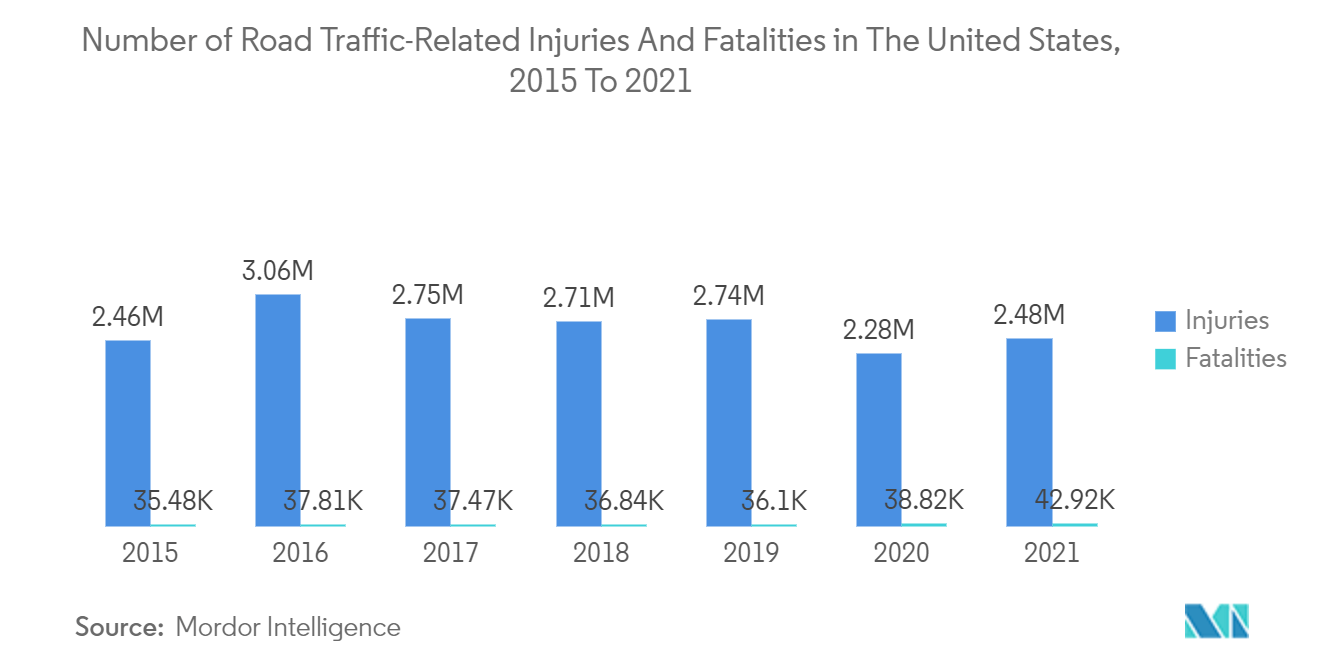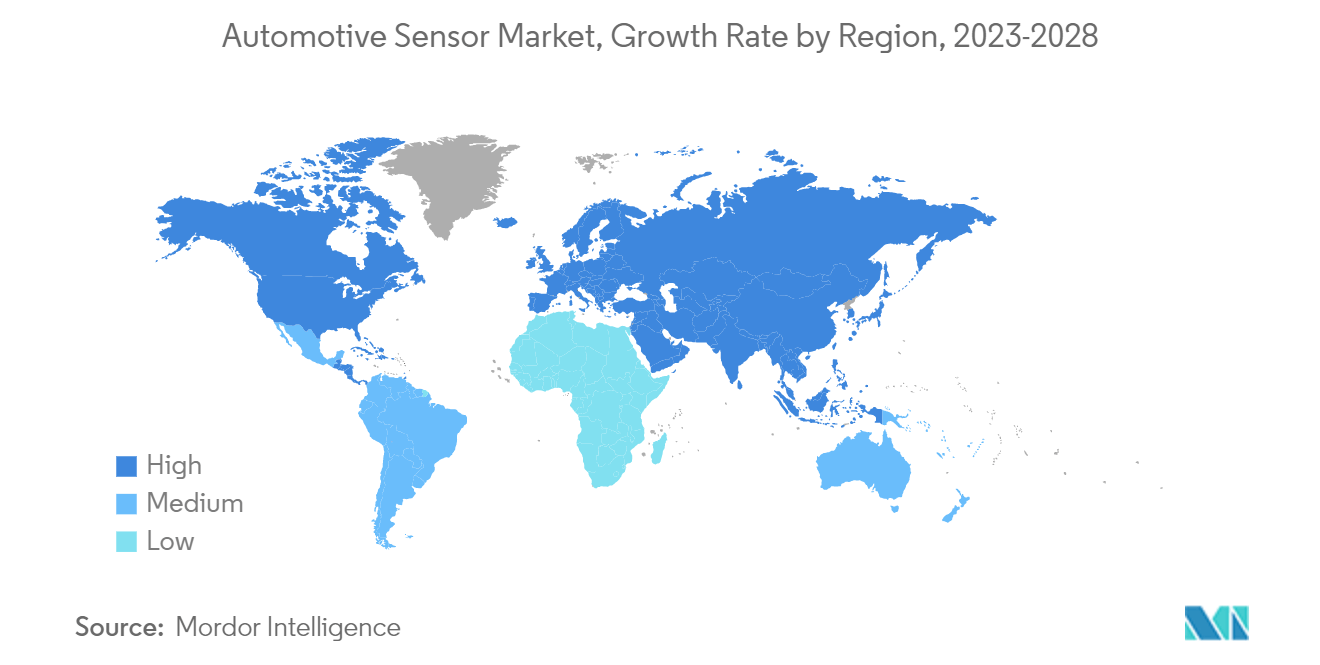Market Trends of Automotive Sensors Industry
Government Initiatives And The Growing Emphasis On Safer Automotive Systems Driving The Market
Around 1.24 million people die in road accidents each year on average around the world, half of whom are vulnerable road users like motorcyclists and pedestrians, and the other half are victims of side-impact collisions.
80% of cars sold worldwide, according to the World Health Organization (WHO), do not meet the essential safety requirements. The complete set of the seven most crucial regulations for auto safety has only been adopted by 40 nations.
The number of accidents has significantly increased, which has prompted end users to adopt better safety measures. In all first-world nations, injury and death rates have steadily decreased thanks to advancements in road and vehicle design.
Governments are concentrating on enforcing strict safety regulations and encouraging the adoption of various subsystems such as sensors in vehicles that enhance the aspects of safety because accident rates are still higher in some developing countries.
These factors are motivating automakers to add a number of safety sensors to their vehicles. Modern cars can now be found with cutting-edge security and safety features. Consumers are now more interested in choosing vehicles that are outfitted with better safety systems as a result of their increased concern for safety systems and technologies.
Additionally, a number of nations around the world have passed strict regulations governing vehicle pollution and fuel efficiency. Regulatory bodies including the National Highway Traffic and Safety Administration (NHTSA) in the United States, the International Council on Clean Transportation (ICCT) in Europe, and other organizations have adopted fleet-level requirements. These specifications set a minimum emission level that automakers must follow.
Based on the aforementioned points, the target market is expected to grow at a significant rate during the forecast period.

Asia-Pacific Dominates the market
Asia-Pacific held a major market share in terms of revenue during the forecast period. A rise in vehicle sales across the region is likely to increase the demand for sensors in the vehicle. The rise in demand for electric vehicles across the region is also propelling the growth of the market. The major presence of manufacturing industries across China, India, and Japan is creating market growth opportunities.
Due to increasing urbanization and stable economic conditions, automotive production in developing economies is growing faster than in developed economies. With an increase in the safety concerns among the consumers in the developing economies of India and the ASEAN countries, automobile manufacturers are incorporating more sensors in low-cost vehicles. It is expected to drive the demand for automotive sensors in the foreseeable future.
Some of the world's fastest-growing economies are located in the APAC region, with China and India leading the way. As a result, consumers in the middle class are more likely to purchase vehicles with advanced features like ADAS because they have more money to spend.
The adoption of advanced driver assistance systems (ADAS) and other safety features that rely on automotive sensors has been driven by initiatives implemented by numerous governments in the region to reduce traffic congestion and enhance road safety. With lower entry barriers than in other regions, the regulatory environment in many APAC nations is favorable for the adoption of advanced automotive technologies.
Additionally, some of the world's largest markets for electric vehicles (EVs) are located in the region. The fact that EVs heavily rely on sensors to control power delivery and monitor battery performance is driving regional demand for automotive sensors.
Hence, APAC region is the most important market for automotive sensors because of its high demand for vehicles, rapidly expanding economy, encouraging government initiatives, favorable regulatory environment, and growing emphasis on electric vehicles.


